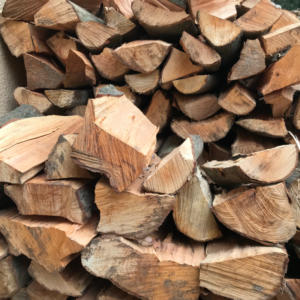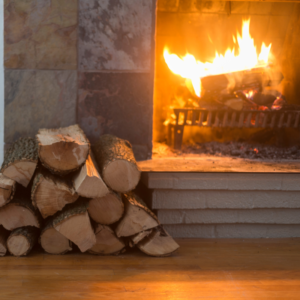For those seeking the right way to fuel a fire in their home heating system, there’s an easy and short answer – seasoned firewood.
But why is this the right way to go? What considerations should be in mind when purchasing or preparing firewood? And how should firewood be stored for optimum burning efficiency? We’ve got the answers you’re seeking.
What Is Seasoned Wood? Why Use It?
 First off, what exactly is seasoned wood? Seasoned wood is simply firewood that has been dried over time so that much of the moisture content has been removed. When wood is freshly cut, it contains a great deal of water, but that moisture content should be reduced to 15-25% before it’s burned.
First off, what exactly is seasoned wood? Seasoned wood is simply firewood that has been dried over time so that much of the moisture content has been removed. When wood is freshly cut, it contains a great deal of water, but that moisture content should be reduced to 15-25% before it’s burned.
Wood that is green (freshly cut) or damp burns less efficiently. It’s likely going to be more difficult to get your fire going, and once it is going a lot of the fire’s energy will be used to evaporate off water from the wood. As a result, your fire will be less clean and less hot. No surprise here – water is not your friend when you’re trying to enjoy a fire.
Wood with a higher moisture content is also going to generate a smokier fire, which means that creosote and soot will build up in the chimney flue. Creosote and soot are both highly combustible, and creosote becomes increasingly difficult to remove over time. Left unswept, a chimney becomes extremely hazardous, not only because obstructions like nests and debris can congest the flue, but also because of the increased risk of experiencing a chimney fire.
How Can I Tell if My Firewood Is Seasoned?
Seasoned wood will show its age if set next to a piece of green wood.
- It will be darker in color, typically with darkened ends.
- It should show visible checking (cracks and splits).
- The bark should be looser.
- If you tap two pieces of wood together, there should be a hollow knocking sound, rather than a dull thunk.
- It should feel much lighter in weight than green wood.
If you purchase seasoned wood from a supplier, look for clear signs of seasoning (listed above), or use a moisture meter to check that wood has that moisture content you’re looking for. Less than 20% is ideal, and over 25% is not ready to burn quite yet.
Seasoning Your Own Firewood?
If you’re chopping your own wood, it will season more quickly if chopped to shorter lengths, and much more quickly if split rather than left in logs. These steps create more surface area to expose the wood to the wind and sun.
Firewood should be stored off the ground with room for air to circulate. To protect it from the rain, cover the top of the pile, but leave the sides open to benefit from the air circulation and sunshine and to protect against the formation of mold. A shed with open sides and a dependable roof is an ideal spot.
It’s also helpful to rotate your firewood. In other words, be intentional about using older wood first to keep it from eventually rotting at the bottom of the pile. This will also give newer wood more opportunity to dry before use.
When seasoning your own firewood, plan ahead. It can take 6-12 months for newly chopped wood to be dry enough to use. Once ready, it should be usable for 3-4 years, if stored correctly.
Will Any Type of Wood Work?
Is all firewood created equal? Not exactly. While hardwoods (such as maple, ash, oak, cherry, and walnut) and softwoods (such as poplar, spruce, fir, pine, and cedar) are both suitable for fireplace use, they do have some different qualities.
Hardwoods are more dense than softwoods and will produce a longer-lasting, hotter blaze than softwoods. Softwoods are easier to light, but will burn more quickly and generate less heat per volume than hardwoods.
If you have access to both hardwoods and softwoods, use them strategically. Save the hardwood for chillier evenings or for gatherings where you want to spend less time and attention adding fuel to the fire. Use your softwoods on less chilly days or as kindling in conjunction with your hardwood.
What NOT to Burn in a Fireplace
Some of the following items, when burned, release harmful chemicals and dark smoke that can stain interiors. Others contain harmful chemicals that mar indoor air quality and can cause respiratory issues. They also increase the risk of a fire becoming uncontained.
 Styrofoam
Styrofoam- Plastic
- Cardboard packaging
- Colorful gift wrap
- Magazines and newspapers
- Christmas trees
- Household waste
- Treated, painted, or varnished wood
- Construction waste
- Plywood
- Particleboard
Really, anything except well-seasoned firewood should stay out of your fireplace. And remember – just because it’s a wood product does not mean it’s properly seasoned firewood suitable for burning in a fireplace.
Book Your Inspection Today
Even if you use the proper fuel, it’s important to have your chimney inspected annually. With the combination of proper fuel and a well-maintained system, you’ll be enjoying your fireplace for years to come.
You can trust our knowledge and experience to keep your system running at its best, safest, and most beautiful. Call 530-285-3841 or reach out online to book your appointment.

Recent Comments